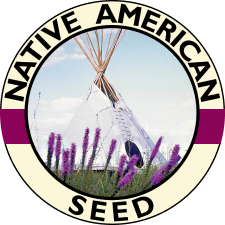43 species of wildflowers and grasses! Trying to get a better picture of what a restored Blackland Prairie looks like?? Commons Ford Prairie Restoration Flickr page has a great archived history of Native American Seed Blackland Prairie planting, management, prairie plants, wildlife and more, all organized by volunteer efforts.
It's extremely hard to portray just a few photos to represent a Blackland Prairie, as she changes throughout the seasons. That’s the beauty of all prairies. Once you get an eye for diversity, a paradigm shift can occur that supports all the positive connections and functions of a healthy prairie.
By 1900, the Blackland Prairie was mostly under cultivation, being recognized as one of the foremost cotton producing regions of the world. Many grand old Victorian homes in the cities and towns still exist as reminders of the fortunes made in those times. Cultivation was a catastrophic disruption of the prairie ecosystem. It was a common farmer's joke to tell the story of an old Indian who, having seen a plowed field for the first time, said to the farmer, "Wrong side up."
The story was taken to be an illustration of the Indian's ignorance, but in fact, when the native grasses are turned under and the soil aerated, the organic matter decomposes faster. This creates a flush of nutrients available to cultivated crops, but when the crops are harvested, the nutrients are hauled off with the harvest, and the soil continues to be depleted year after year.
Today's dependence on chemical fertilizers is evidence that perhaps there was more wisdom in that indigenous elder’s statement than was recognized at the time.
Native prairie grasses are structurally quite different than exotic pasture grasses. For example, Texas pasturelands are primarily planted to Bermudagrass introduced from Africa. This exotic pasture grass creates a dense, tangled, matted turf. Native prairie grasses, by contrast, are typically bunch-forming. This characteristic allows for systems of wildlife micro-trails to develop under the grass canopy, traveling around the clumps of the root bases. Prairie animal species such as Bobwhite Quail, Horned Lizards, and many small mammals, rely on this structural type of prairie habitat for their basic needs of reproduction and mobility. The overstory grass canopy provides protection from soaring hawks and other predators by keeping big portions of the micro-trails out of view. Nesting also occurs under this canopy or directly in the clumped bunchgrasses.
Components within our mixtures may vary seasonally due to availability. Severe climate issues coupled with exponential land fragmentation across Texas is causing impacts on our historic native prairie remnant harvest sites. Please feel free to call or message us on Live Support to confirm current species of mixed inventories available. We are grateful for your understanding.
If you know of native remnants suitable for large-scale harvest, please advise. We appreciate your interest in our work
- SAND DROPSEED
- CLASPING CONEFLOWER
- BLACK-EYED SUSAN
- PINK EVENING PRIMROSE
- GREEN SPRANGLETOP
- LITTLE BLUESTEM
- TALL DROPSEED
- SAND LOVEGRASS
- PLAINS BRISTLEGRASS
- PURPLE PRAIRIE CLOVER
- LEMON MINT
- PLAINS COREOPSIS
- BIG BLUESTEM
- INDIANGRASS
- HOODED WINDMILL GRASS
- SIDEOATS GRAMA
- INDIAN BLANKET
- SMOOTH WHITE PENSTEMON
- VIRGINIA WILDRYE
- PRAIRIE WILDRYE
- PRAIRIE GOLDENROD
- BROOMSEDGE BLUESTEM
- RATTLESNAKE MASTER
- ILLINOIS BUNDLEFLOWER
- PURPLETOP
- SWITCHGRASS
- TALL GOLDENROD
- BUFFALOGRASS
- SHOWY MILKWEED
- AMERICAN BASKETFLOWER
- STIFF GOLDENROD
- STANDING CYPRESS
- PARTRIDGE PEA
- CANE BLUESTEM
- INLAND SEAOATS
- SWAMP MILKWEED
- BUTTERFLY WEED
- CANADA GOLDENROD
- MAXIMILIAN SUNFLOWER
- WINECUP - ANNUAL
- CUTLEAF DAISY
- TEXAS BLUEBONNET
- EASTERN GAMAGRASS
- TEXAS CUPGRASS
- PRAIRIE VERBENA
- TEXAS YELLOW STAR
- MEALY BLUE SAGE
- WINECUP - PERENNIAL
- WHITE ROSINWEED
- SPIDERWORT













